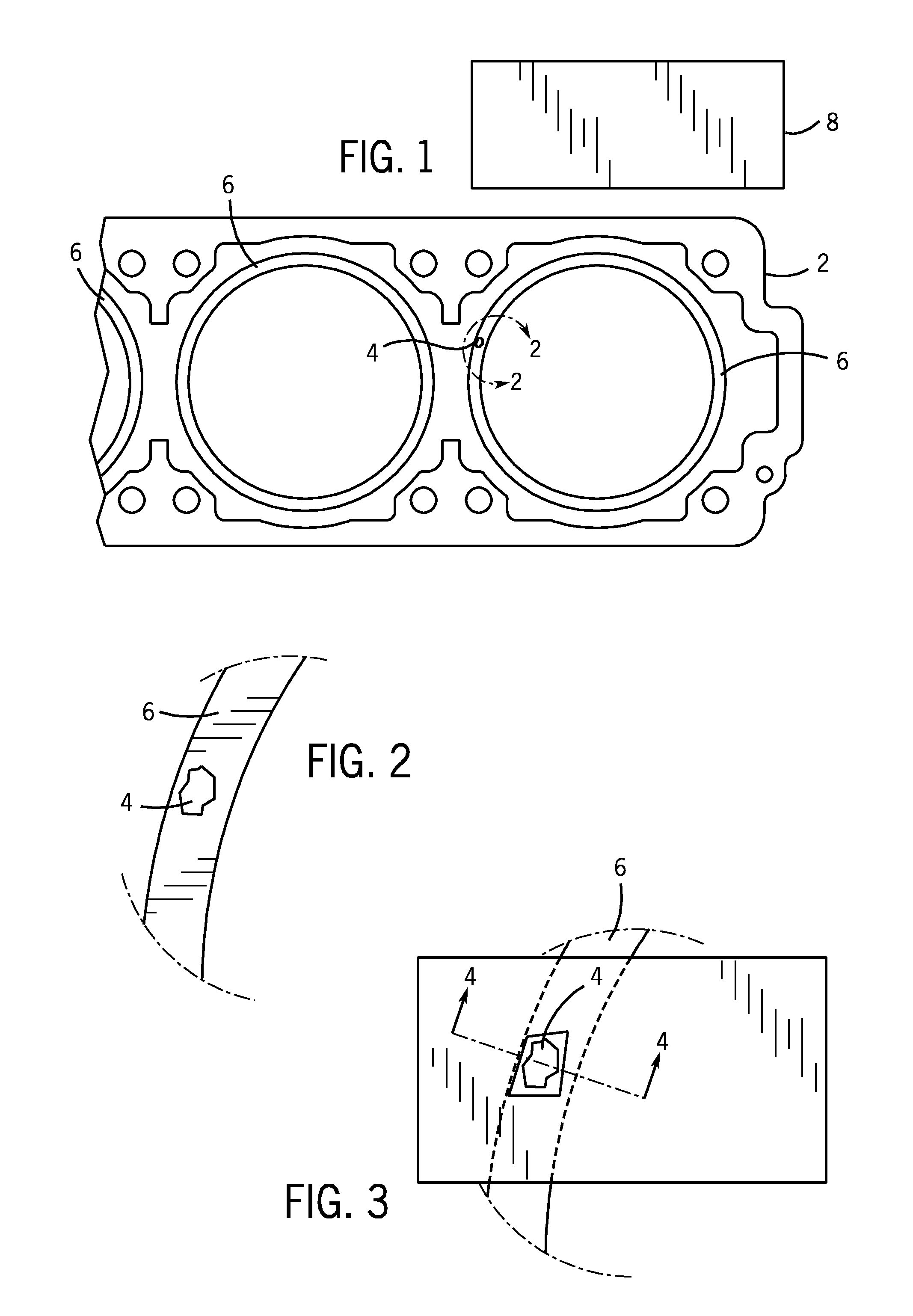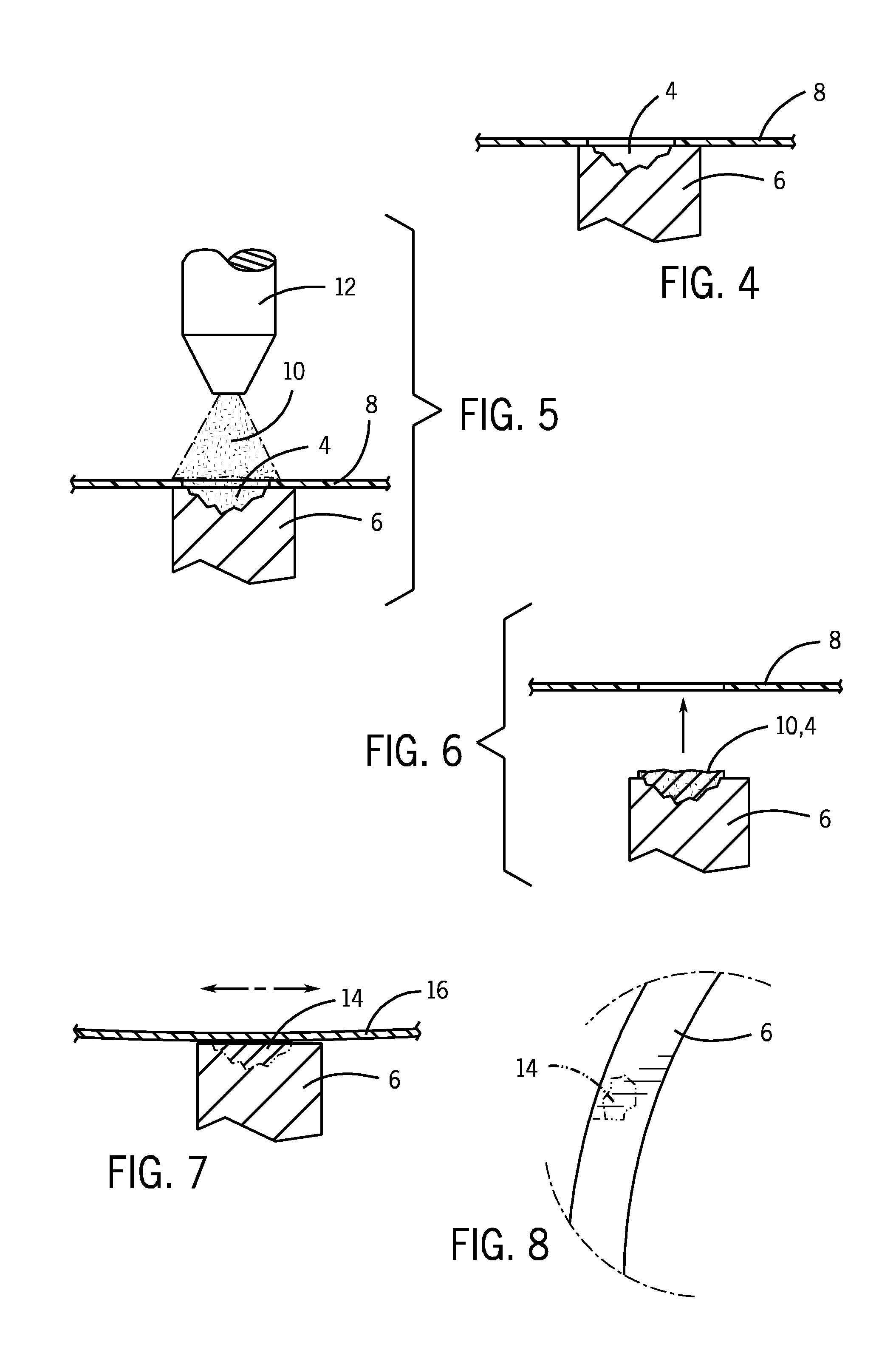Restoration process for porosity defects in metal cast products
a metal cast and porosity technology, applied in metal working devices, manufacturing tools, coatings, etc., can solve the problems of insufficient significant amount of surface area, and insufficient surface porosity level of a four-stroke engine block, etc., to achieve low cost of hpdc process, high porosity level, and high manufacturing cost
- Summary
- Abstract
- Description
- Claims
- Application Information
AI Technical Summary
Benefits of technology
Problems solved by technology
Method used
Image
Examples
Embodiment Construction
[0026]The restoration process for repairing surface porosity defects in the cylinder bores of engine blocks cast using the high pressure die cast method is disclosed herein. Referring to FIG. 1, an engine block 2 is cast using a high pressure die cast (HPDC) casting method. The HPDC method is a highly economical casting method that inherently yields a number of surface porosity defects in the final cast article. Such defects are revealed when the final cast article, such as the engine block 2, is machined subsequent to casting. Surface porosity defects 4 result from the entrapment of air, inadequate feeding, shrinkage or precipitation of hydrogen during the cooling of the alloy used to form the engine block 2.
[0027]Surface porosity defects 4 are particularly undesirable on or in cylinder bore 6 of the engine block 2. Such defects may cause excess oil consumption, create problems in coating the cylinder bores and / or create problems with piston ring or gasket sealing.
[0028]Once the su...
PUM
| Property | Measurement | Unit |
|---|---|---|
| porosity | aaaaa | aaaaa |
| porosity | aaaaa | aaaaa |
| diameter | aaaaa | aaaaa |
Abstract
Description
Claims
Application Information
 Login to View More
Login to View More - R&D
- Intellectual Property
- Life Sciences
- Materials
- Tech Scout
- Unparalleled Data Quality
- Higher Quality Content
- 60% Fewer Hallucinations
Browse by: Latest US Patents, China's latest patents, Technical Efficacy Thesaurus, Application Domain, Technology Topic, Popular Technical Reports.
© 2025 PatSnap. All rights reserved.Legal|Privacy policy|Modern Slavery Act Transparency Statement|Sitemap|About US| Contact US: help@patsnap.com



